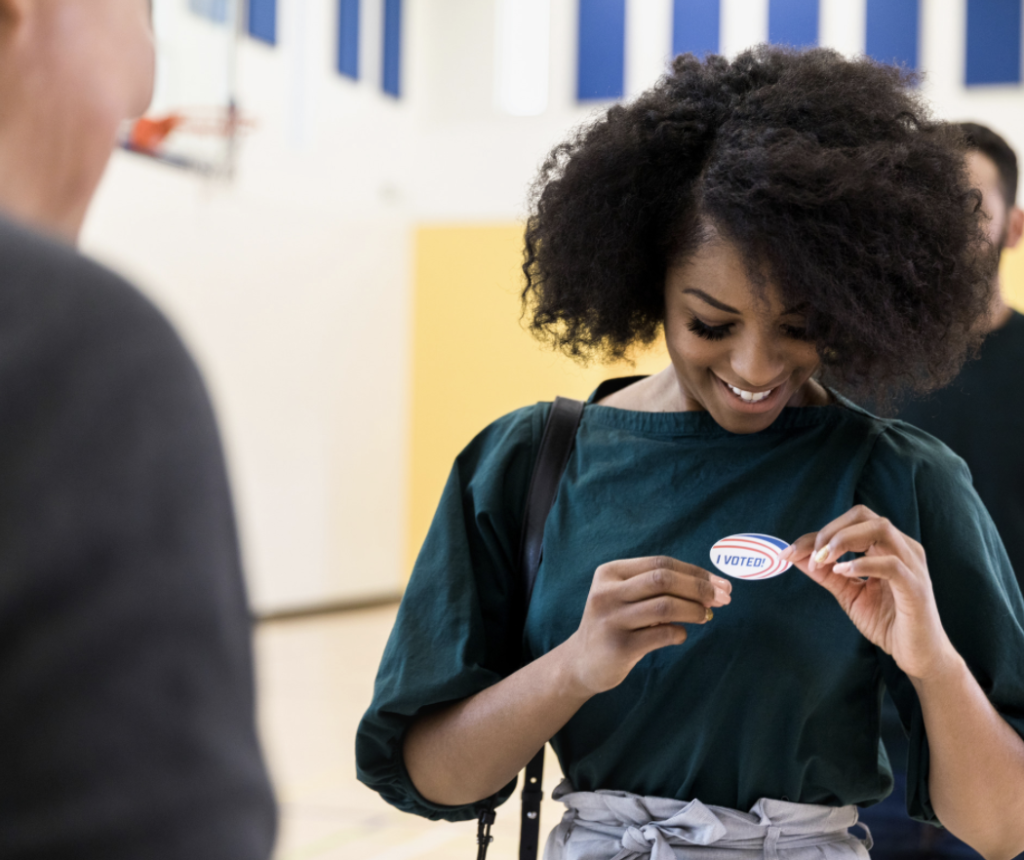
On July 1, 1971, the 26th Amendment to the United States Constitution was ratified. This amendment was responsible for lowering the voting age down from 21 and thus entrusted 18-year-olds the right to vote in all U.S elections. Spearheaded by youth activists through much of the early 20th century, the passage of the 26th Amendment to this day remains a true testament to the power of young people and their ongoing commitment to our democracy. On this milestone anniversary let us celebrate the role young voters play in our electorate and as nonprofits, continue to empower their voices through our ongoing efforts of voter engagement.
Despite its relatively recent history, the fight to lower the voting age to 18 began during the 1940s, and later intensified during the 1960s. In 1942, at the height of World War II, Congress approved measures to lower the minimum draft age from 21 to 18, and by the war’s end 10 million men had been inducted into service. From this, the slogan synonymous with the movement “Old enough to fight, old enough to vote” was born.
In the decades that followed, the fight to lower the voting age to 18 became a permanent fixture of the American political sphere. The movement continued to grow in popularity among youth advocates and legislators alike. Yet it would not be until the mid-1960s, with the American public becoming disillusioned with the ongoing war in Vietnam and the system in place that required young men to fight but prohibited them the right to vote, that the movement to lower the voting age would begin to gain widespread traction. In 1970, an amendment to the 1965 Voting Rights Act including a clause to lower the voting age nationally in all federal, state, and local elections, was signed by President Richard Nixon. However, this was later struck down in the 1970 Supreme Court case Oregon v. Mitchell, with the ruling declaring states could maintain 21 as the voting age in state and local elections but were required to establish separate voter rolls so that voters between 18 and 21-years old could vote in federal elections. Motivated by the confusion this ruling would cause, Congress swiftly proposed the 26th Amendment, which went into full effect three months later having been ratified by the necessary 38 states.
The 1972 Presidential Election saw a record 55.4% of young voters, aged between 18-29 turnout to cast their ballots, some for the first time. However, in the subsequent years that followed, turnout and overall rates of engagement among this same group began to decline, with the youth vote in 1996 for example reaching an all-time low of 37%. Yet, while it is often said that young people are apathetic to our political system, this is simply not the case. From the 1960s to the present day, young people have consistently proven themselves to be the driving force behind societal change, and have been instrumental in advocating for social, economic, and racial justice. From the March on Washington of 1963 through to the Black Lives Matter protests of 2020, youth activism has and continues to span multiple generations.
The 2020 Election showed us that young people are not only committed to turning out to vote in record numbers (2020 turnout rate of young voters aged 18-29 reached 55%), but that they understand the importance of government and believe their generation has the power to create lasting change (CIRCLE). In 2021 and beyond, it is our duty as nonprofits to continue to educate and engage the young voters in the communities we serve and ensure their active participation. Research conducted in our 2018 Engaging New Voters report found voters contacted by nonprofits were TWICE as likely to be young, a person of color, and female – these same voters were 11% points MORE likely to vote than those NOT contacted by nonprofits. Therefore as we celebrate the lasting legacy of the 26th Amendment and what it has meant in the pursuit of achieving a more representative democracy, we invite you to join us in our efforts to ensure the turnout rate among this group continues to climb by committing to robust, nonpartisan voter engagement in the communities you serve!




